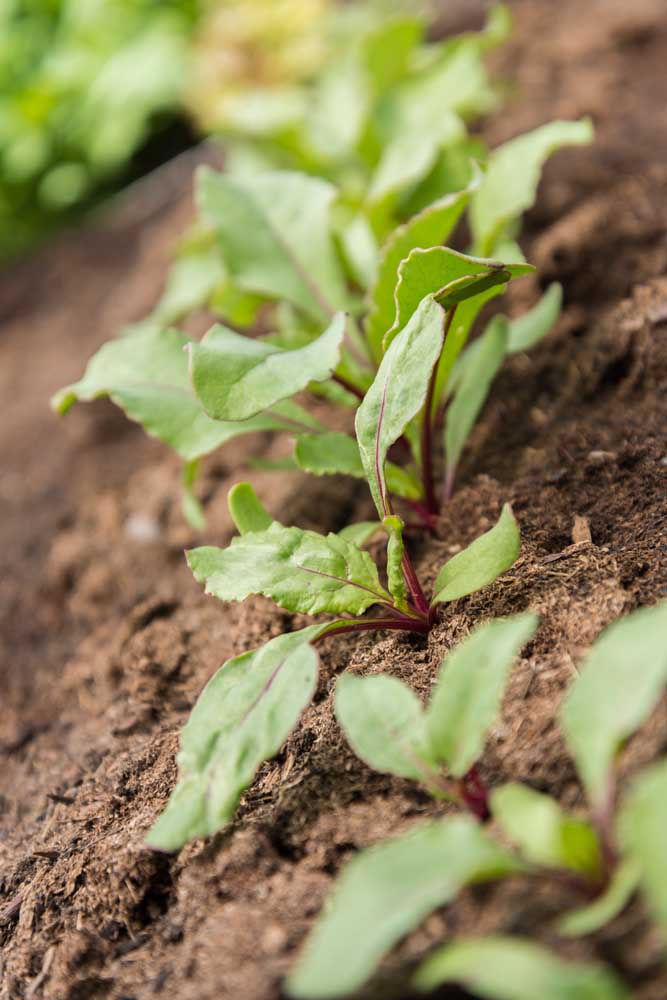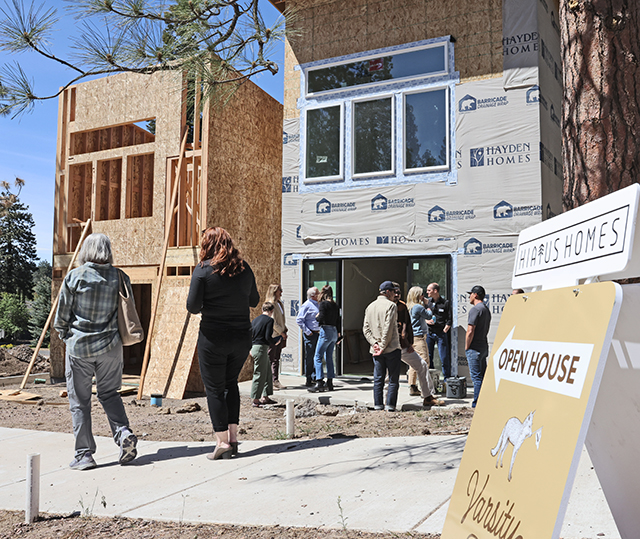Garden-To-TableTakes Root
Published 12:00 am Saturday, March 5, 2016

- Garden-To-TableTakes Root
From pots of culinary herbs on kitchen windowsills, to schoolyard plots tended by preschoolers, to huge community gardens managed by professionals, Central Oregonians are discovering the joy of growing and eating their own food.
The garden-to-table movement, as it is sometimes called, finds its roots in the farm-to-table restaurant trend that gained much popularity over the last decade. Thanks to an interest in understanding where one’s food comes from, along with a desire to consume locally produced, high quality fresh food, the movement has spread from restaurant kitchens to suburban dinner tables everywhere.
“People love to have a connection to the earth and produce their own food,” said April Warchol, OSU Extension Service Master Gardener™ and co-coordinator for Hollinshead Community Garden. “Every time I am in the garden I speak to so many people who tell me how much they love gardening.”
Growing a garden has many delicious and practical benefits, said Warchol. She, along with fellow Master Gardeners™ and co-coordinators for Hollinshead Community Garden, JoAnne Abbot and Mary Ann Hart, explained that gardening gives us the ability to grow a variety of vegetables and flowers that are not readily available in stores, save money, and improve our physical and mental well being.
“Nothing beats eating fresh veggies that you had a hand in growing and harvesting,” said Warchol. “It is so satisfying … being out in the sunshine and fresh air. Moving and bending can do wonders for your body and spirit. Getting your hands in the soil and producing beautiful vegetables is transformative.”
While the benefits are significant, gardening on the High Desert, with its short growing season and dry climate, can be a challenge. Fortunately, there are many resources available to help the would-be gardener get started. Both COCC and OSU Extension Service offer classes to help gardeners of all levels successfully create abundant gardens in Central Oregon.
For those who might like to try gardening but don’t have the space or inclination to do it at home, community gardens are a great option.
“[Members of the community garden] can interact with other gardeners, get planting tips, and socialize with other people who share their love of gardening,” explained Warchol. “Half of the fun of being in the garden is to see who is growing what and how they are doing it.”
Community garden programs such as Hollinshead, on Bend’s Eastside, and its sister garden in the Northwest Crossing area, provide great support for gardeners of all skill levels.
“Each plot [at Hollinshead] has a mentor assigned to it, and these mentors are certified Master Gardeners who are there to serve as support, and pass along current information to help gardeners to be successful. We offer several classes throughout the growing season on various topics, and we also provide literature in the garden, as well as information on our website,” said Warchol. “I love the idea of helping people figure out how to grow their own healthy, nutritious, delicious food!”
There are more than 15 community gardens in Central Oregon offering various levels of support. But many of these gardens fill up extremely quickly. Hollinshead Community Garden alone keeps a waiting list of dozens of people every year.
Taking the garden to the community
Perhaps the most exciting development in the growing garden-to-table movement is the opportunity to get fresh, local produce into the mouths of the people who need it most — children and low-income families.
In the past few years there’s been a huge surge in edible education through school garden programs. According to the Oregon Department of Education website, there are more than 600 school gardens in Oregon, with well over a dozen in Central Oregon.
“We believe that by teaching our younger generation the importance of understanding how our food is produced, and where our food comes from, they will carry this context and enthusiasm with them later in life, leading to more informed, healthier choices,” said Benjamin Miosi, marketing and community relations team leader at Whole Foods Market, Bend, which has pledged approximately $5,000 in 2016 to the direct construction of school gardens through their community partner, Discover Your Forest.
Spring Olson, owner of the Central Oregon Seed Exchange, explains that growing produce is a great way for kids and families on a limited budget to get healthy, nutrient rich food.
“We are getting kids outside, and getting their parents out there with them. It gets fresh food into the kids’ hands,” she said.
Through her preschool immersion program, Olson is able to sponsor five preschool gardens every year with up to 30 pots, soil, and the seed needed to grow vegetables in the classroom.
Going beyond the schoolyard, the High Desert Food & Farm Alliance (HDFFA) offers hands-on, educational support for low income households to learn more about growing and cooking their own food.
“It’s a transformation to understand where your food comes from,” said Jane Sabin-Davis, board chair for the HDFFA. Their Seed to Supper program, offered in conjunction with OSU Extension Service and the Oregon Food Bank, is designed to teach participants the skills required to successfully grow container gardens.
“People want the education,” said Sabin-Davis. “You can’t learn gardening through a book. We mentor the participants throughout the summer.”
The HDFFA’s Seed to Supper ties in beautifully with their Cooking Matters program, which teaches participants how to prepare fresh food for themselves at home. This is another hands-on program where students learn how to shop, read labels, combine foods, properly use kitchen tools, and prepare complete meals.
“After each class, everyone shares the meal, then they get a $10 bag of food to take home, so they can recreate the meal themselves,” said Sabin-Davis.
While in most cases Cooking Matters is offered independently of the Seed to Supper program, in the Prineville area the classes are tied together. Students have the opportunity to not only get their hands in the dirt and grow their own veggies, but the education to learn how to prepare those same veggies in delicious ways.
Sharing the abundance
There are many ways for individuals to support the garden-to-table movement in our area. If you are lucky enough to find yourself with an abundant harvest this year, the HDFFA makes it easy to donate your extra veggies to support community kitchens.
“If we could engage backyard gardeners to donate their excess produce, that would make a huge impact on the amount of fresh food available to our community. Our website has a map with donations sites, plus you can drop your excess at our booth at the Northwest Crossing Farmers Market,” said Sabin-Davis.
If you’re interested in donating time or dollars, the HDFFA (HDFFA.org), Whole Foods Market (stop by the store or see WholeKidsFoundation.org), and the Central Oregon Seed Exchange (SeedExchange.weebly.com) are just a few of the organizations that make it easy to give back.
Whether you get your hands in the dirt, or support one of the amazing garden programs in our area, remember that, as Greg Peterson says in his book, Grow Wherever You Go! Discovering the Place Where Your Garden Lives — “Wherever you go, you can grow food! Now is the time for us to join together and plant the seeds that will transform the places in which we live.”






